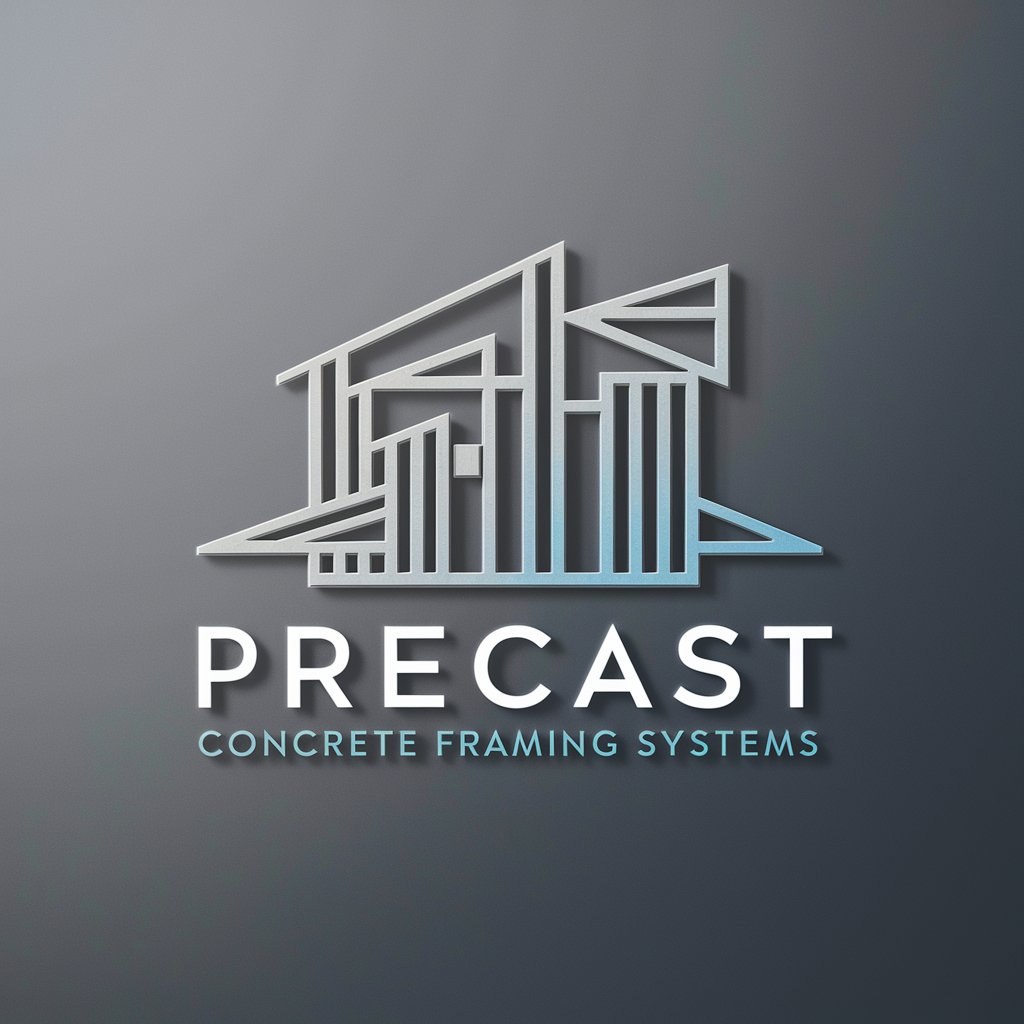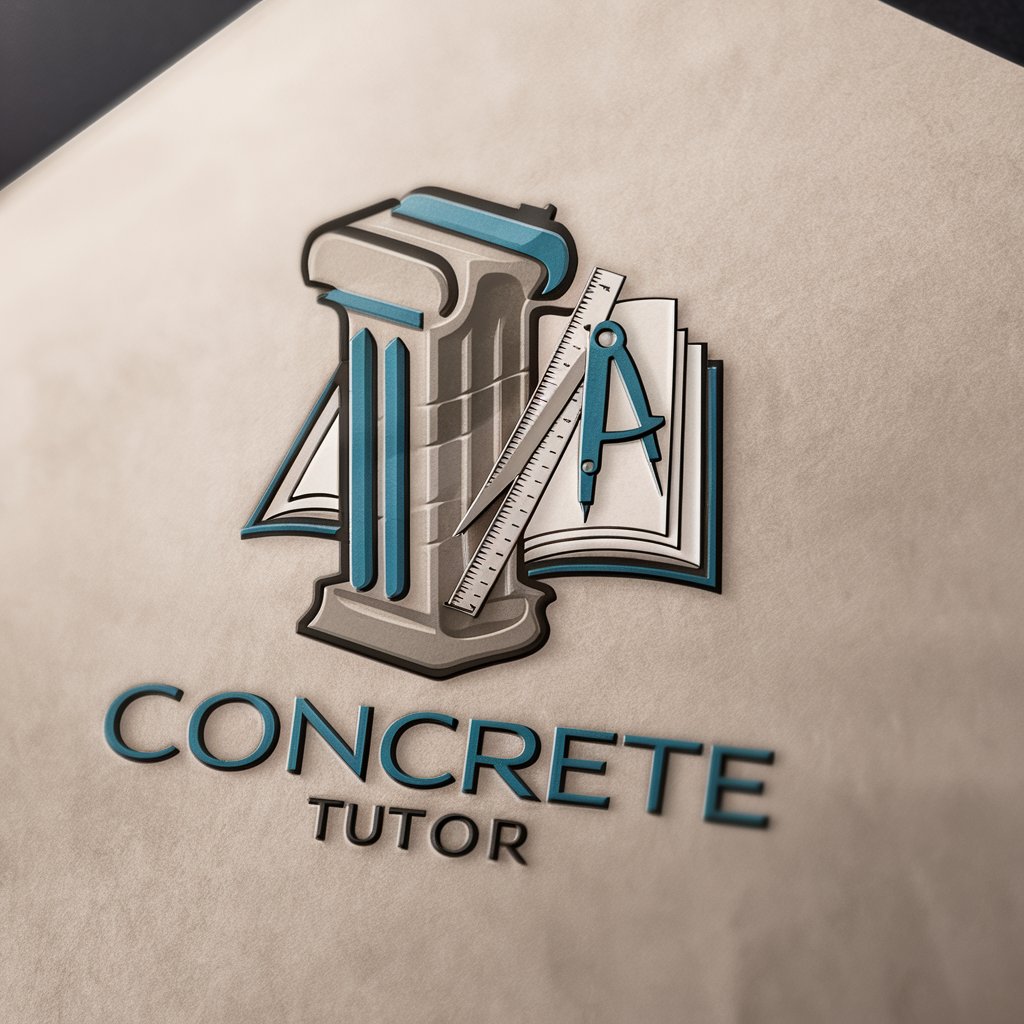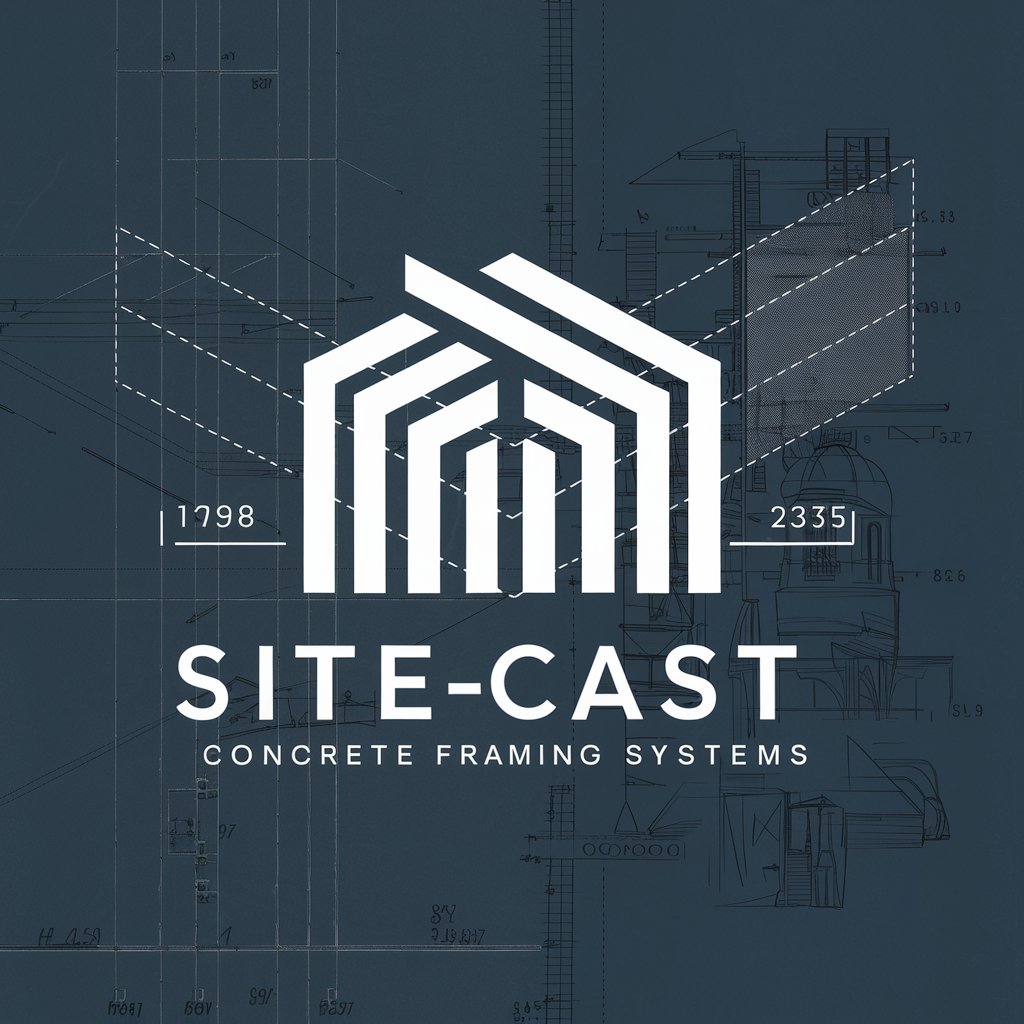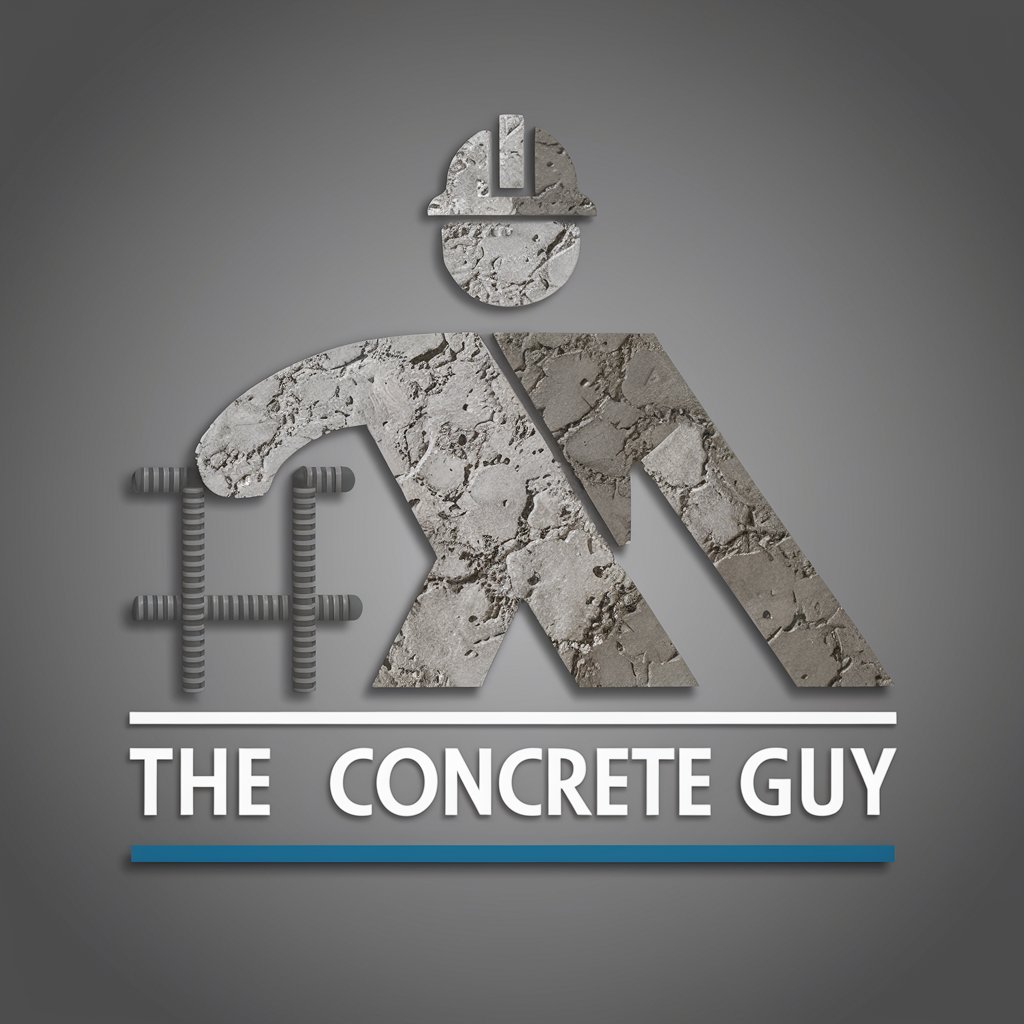Precast Concrete Framing Systems - Precast Concrete Framing Insight

Welcome to Precast Concrete Framing Systems, your expert resource for all things precast concrete.
Empowering Concrete Construction with AI
Explain the manufacturing process of precast concrete beams, including the materials and methods used.
Describe the advantages of using precast concrete wall panels in modern construction projects.
What are the key differences between precast and sitecast concrete in terms of structural performance and installation?
Detail the assembly concepts for precast concrete buildings, focusing on joining precast concrete members.
Get Embed Code
Overview of Precast Concrete Framing Systems
Precast concrete framing systems are advanced structural solutions used in the construction of buildings and infrastructure. These systems consist of standardized, prefabricated concrete components, including slabs, beams, columns, and wall panels, manufactured in a controlled factory setting. This method ensures high quality, dimensional precision, and accelerated construction timelines. The design purpose of precast concrete framing systems centers around efficiency, durability, and adaptability. These systems are highly valued for their ability to withstand environmental stresses and their ease of integration with other building materials and systems. For instance, in the construction of a parking garage, precast concrete beams and columns are used to provide quick assembly and robust structural support, showcasing both the functional and design flexibility of precast systems. Powered by ChatGPT-4o。

Key Functions of Precast Concrete Framing Systems
Structural Integrity
Example
Precast concrete beams and columns
Scenario
In earthquake-prone regions, precast concrete framing systems are engineered to endure seismic activities, providing essential structural integrity and safety.
Speed of Construction
Example
Installation of precast wall panels
Scenario
For a commercial building project, precast wall panels can be installed in a matter of days rather than weeks, significantly reducing the overall project timeline.
Aesthetic Flexibility
Example
Architectural precast cladding panels
Scenario
These are used in the facade of a luxury hotel, where the precast panels are designed with custom textures and colors to match the aesthetic vision of the architects.
Thermal Efficiency
Example
Insulated precast sandwich wall panels
Scenario
In colder climates, these panels provide superior insulation, reducing heating costs for residential buildings while maintaining a high level of energy efficiency.
Acoustic Isolation
Example
Precast concrete floors and walls
Scenario
Used in a multi-family residential complex to effectively reduce sound transmission between units, enhancing the living environment for residents.
Target User Groups for Precast Concrete Framing Systems
Construction Professionals
This group includes architects, engineers, and contractors who seek reliable, quick, and precise building methods. Precast concrete systems cater to these needs with pre-engineered solutions that minimize on-site labor and maximize structural longevity.
Real Estate Developers
Developers benefit from the faster construction times and reduced labor costs associated with precast concrete, which can lead to earlier project completions and quicker returns on investment.
Government and Municipal Planners
For public projects like bridges, tunnels, and schools, precast systems offer durable, cost-effective solutions that meet strict regulatory standards and reduce disruptions during construction.
Commercial and Industrial Builders
In the commercial and industrial sectors, precast concrete is preferred for its ability to meet diverse design requirements and handle substantial loads, making it ideal for factories, warehouses, and office complexes.

Usage Guidelines for Precast Concrete Framing Systems
Register for a free trial
Visit yeschat.ai to start a free trial without any login requirements or subscription to ChatGPT Plus. This step is crucial for accessing initial information and interactive guides on precast concrete framing systems.
Study precast component designs
Review typical design configurations of precast concrete elements such as slabs, beams, columns, and panels. Understanding the design features will aid in selecting the appropriate components for specific projects.
Plan for logistics and assembly
Coordinate the logistics for transporting precast elements from the manufacturing site to the construction site. Plan the assembly sequence to optimize the building process and ensure structural integrity.
Implement joining techniques
Apply proper techniques for joining precast concrete components. This might include using post-tensioning, grouting, and welding connectors to ensure the entire structure behaves monolithically.
Inspect and maintain
Regularly inspect the precast concrete structures for any signs of distress or deterioration. Proper maintenance is essential for prolonging the life of the structure and ensuring safety.
Try other advanced and practical GPTs
Concrete Tutor
Empowering Your Design with AI

Sitecast Concrete Framing Systems
Streamlining Concrete Construction with AI

The Concrete Guy
Streamline Your Build with AI-Powered Precision

Concrete Creativity Guru
AI-Powered Concrete Solutions

Sushi Day
AI-powered sushi culinary guide

NVR510ルーターマニュアル専門家
Your AI-Powered NVR510 Guide

Stationary Concrete Pump Tech Support
Expert AI-powered pump guidance

Elegant Tailor
Crafting Elegance with AI

aspiration ASSISTANT
Empower Your Aspirations with AI

旅行アドバイザーBRAIN
Your AI-Powered Travel Guide

GoalGuide
Empower Your Potential with AI

全屋定制避坑指南
Smarter Home Customization with AI

Detailed Q&A on Precast Concrete Framing Systems
What are the primary advantages of using precast concrete framing systems?
Precast concrete systems offer enhanced quality control, reduced construction time, and improved durability. They also provide better environmental control during manufacturing and less on-site labor requirement.
How does precast concrete contribute to sustainable building practices?
Precast concrete supports sustainability through energy efficiency, reduced waste, and the ability to use recycled materials in the mix. The thermal mass of concrete also contributes to energy savings in buildings.
What are the critical considerations for the transportation of precast elements?
The key considerations include the size and weight of the elements, route analysis for transportation, ensuring structural stability during transit, and the presence of lifting and rigging equipment on-site for installation.
Can precast concrete be used for all types of buildings?
Precast concrete is versatile and can be used for a variety of building types, including residential, commercial, and industrial structures. However, the specific design and engineering must be tailored to each project's requirements.
What are some common challenges faced when working with precast concrete?
Challenges include logistical issues related to transportation and assembly, the need for precise production and installation to ensure alignment and fit, and the requirement for skilled labor for certain complex connections.
